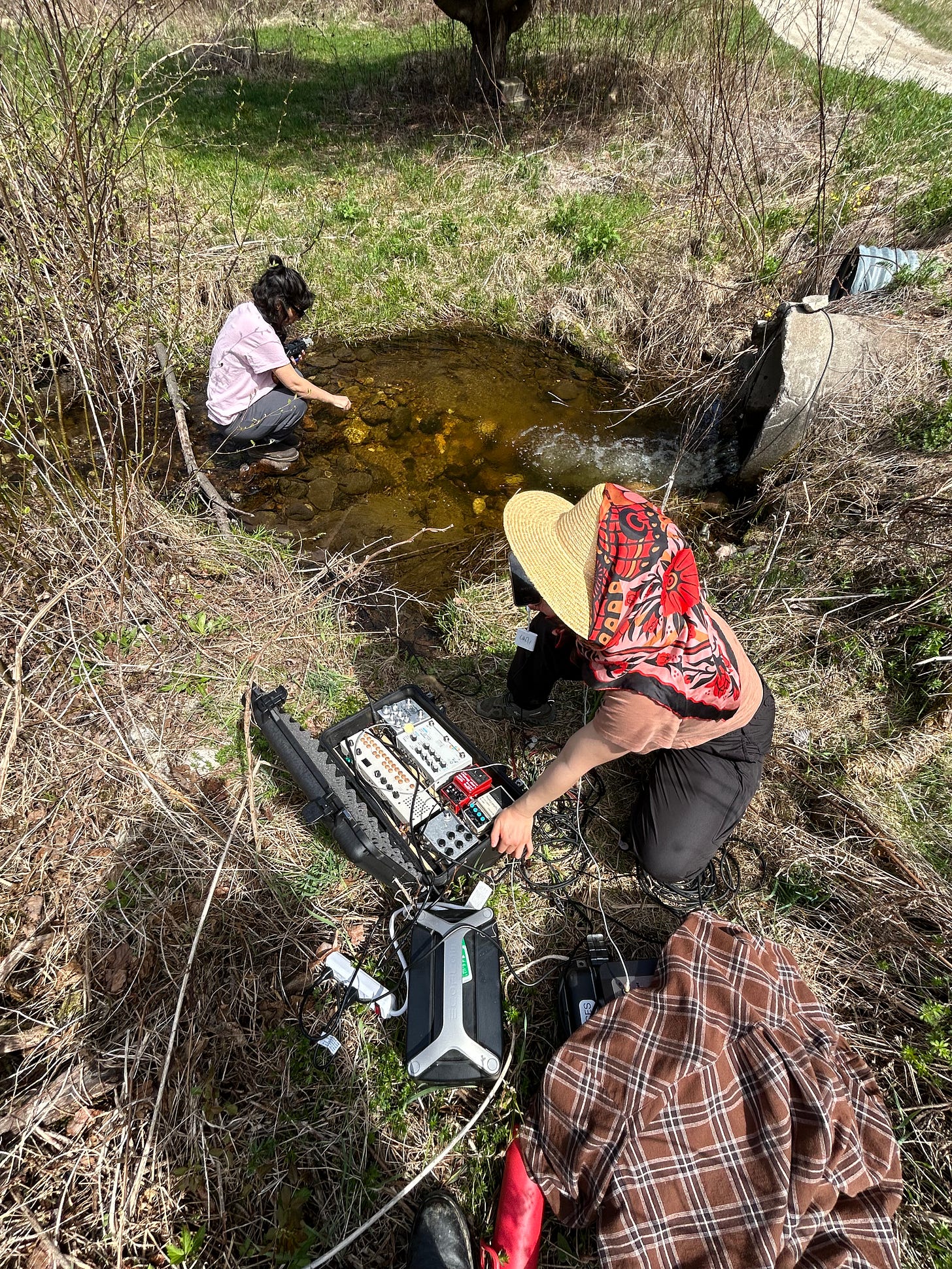In this third and final post in the series, I elaborate on the creation of a short film at the Intelligent Terrain residency, hosted by UKAI Projects at Ferme Lanthorn in Wakefield, Québec for a week in early May 2024. Part 1 introduces my budding interest in edges and experience arriving at the residency, and Part 2 touches on the film making process.
Sequencing the video came together easier than I expected. I knew I wanted whatever this was to be “non-narrative” — and in that, I mean recursive and disorienting. I wanted to tell a sideways story invoking the feeling of being lost in a labyrinth, having to trace its edges with ones skin in order to feel for a way not out but through. Even before finishing the piece, putting it together felt akin to navigating a maze’s twists, turns, and dead ends.





What gave the sequence its initial structure was a decision to begin and end in the dark. By dropping you into the night, I can lead you into a dreamlike space where we can suspend conventionality and try things anew. Nothing need make sense. By the end, the dream dissolves with the dropping of the helmet-camera contraption. You wake up into the night.
I also gave the sequence shape by oscillating between 360° scenes of me exploring Ferme Lanthorn and 1st person POV footage I collected on my phone during the residency. Some of the phone footage used a microscope lens I acquired specifically for the residency. In our conversations leading up to May’s fieldwork, my peers and I returned again and again to considerations of scale. What might we learn by losing ourselves in the microscopic and macroscopic? What edges fade away and which others come into focus?

The visual sequence taken care of (including the poetic fragments I layered over moving image), I needed sound. Not having worked with this medium much before, I underestimated the importance of the auditory aspect. Watching back my film without audio I knew instantly that sound would be the connective tissue linking everything.
In this regard, I was extremely lucky. First, because there was an intense thunderstorm during one of our first nights in Wakefield, which I jumped at the chance to record. Secondly, and most crucially, because residency coordinator and fellow artist, Luisa Ji, brought along recording equipment: contact microphones, synthesizer, loop and distortion pedals. Luisa used these instruments to record us wet felting at local artist Hannah Ranger’s studio, and (due to a kind of sound magic that is beyond my humble comprehension) the output was harmonic, bouncy, and subtle. Perfect material to connect a strange bunch of video.
Excerpt from Luisa’s wet felting recording
On the last day of the residency, while editing the film inside, Luisa set up a recording station at an easily accessible part of the stream running through the farm. This was exactly the kind of synchronicity that I needed to complete the project in time to show later that afternoon. With a contact mic in the stream and another microphone suspended at the mouth of the reinforced concrete pipe, Luisa routed audio inputs through her machines and allowed me to play around with the loop, distortion, and synth. I record directly onto my computer and got quickly to work integrating this audio recording in premiere pro. Along with the wet felt recording, the stream’s drippy, babbling audio would make up the bulk of the sonic landscape of my film.
By the time we needed to present out work at Place des Artistes de Fallerton, I had reached as far as I could toward my vision for this project. It was edgy — navigating the terrain, meditating on the nature of intelligence, asking weird questions. This was my first short film and, within the supportive context of a residency (in terms of the exchange of ideas, skills, and resources), I was able to create a piece that reached close to my vision. Like all art, we never fully reach the desired ideal, but we can at least try to come close.
In the end, Like a Labyrinth came out to 23 minutes and 36 seconds of meanderings and oscillations. The film asks for viewers’ sustained attention and willingness to get lost. A guest at the presentation compared this piece to Alice in Wonderland, and ever since then Lewis Carroll’s story has repeatedly showed up in my readings and conversations. . .
Here’s a view of the film presented at PAF on 04 May 2024, alongside the aforementioned wet felted sculpture (shown hanging) that our cohort made and Mary Ellis of the Ferme completed. Music and laser show provided by fellow resident Simón Rojas.
In the sharing spirit, I invite you to watch all 22 minutes and 36 seconds of Like a Labyrinth on my vimeo, here.
How does the film resonate with you? Where does it take you? How do you feel? Please share your thoughts in your comments, messages, and conversations!





